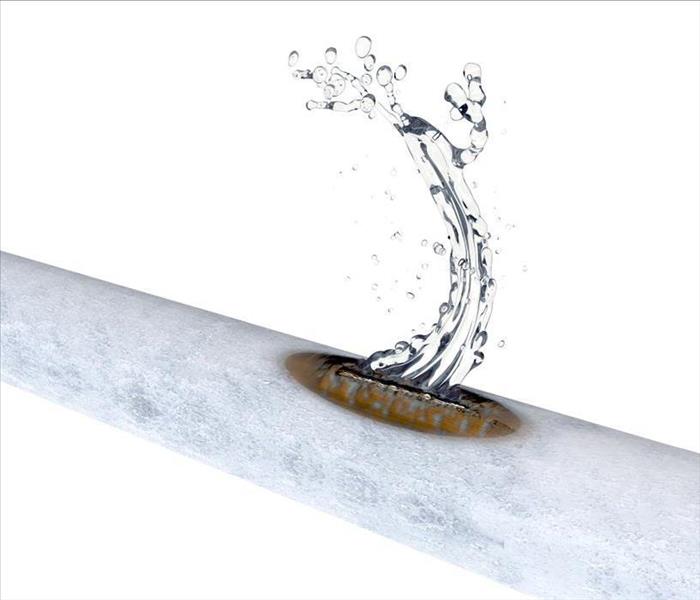How to Handle Frozen Pipes
12/28/2023 (Permalink)
Running water is a necessity in every home, but a busted pipe can easily become a nuisance rather than a convenience. Every homeowner in Downtown Salt Lake City, UT, should know how to handle a frozen pipe and some basic pipe freeze prevention tips.
3 Tips To Consider As Regards Frozen Pipes
1. Frozen Pipe Assessment
If the water from a faucet only comes out in a slow drip when it's turned on, this is a common sign that you have frozen pipes. To locate the source of the problem without exacerbating it, you need to follow several steps:
- Turn off water flow to the pipe that feeds the faucet.
- Open the faucet.
- Trace the path of the pipes leading from the faucet.
- Look for ice, bulges or breaks.
The location of the freeze determines your next move. If the pipe itself is already damaged, you will need a plumber to repair it before you turn the water back on. A layer of frost or ice on intact pipes can usually be melted to save them. Use a hair dryer or portable heater to warm the area around the pipe.
If the pipe is inside the wall, you can turn up the heat in your home, but unless the wall is open, you don't really know what's going on behind it. It's best to hire a professional to find out before you let it fill with water again.
2. Pipe Freeze Prevention
It's good to know how to handle a frozen pipe. The best solution, however, is to keep it from frosting over in the first place. A few pipe freeze prevention strategies can go a long way toward protecting your home from water damage.
When the weather dips below the freezing point, let your faucets drip to keep water flowing through the pipes. Keep cabinets that enclose the pipes open, and insulate all the pipes you can see.
Make sure your thermostat is set to a warm temperature, and consider installing extra heaters in colder areas of your home. Protect outside pipes and those along exterior walls or in the garage by turning off the water source and draining them.
3. Water Damage Remediation
If you already have a burst pipe in your house, you probably also have some water damage to the area surrounding it. Fast action is necessary to prevent the problem from becoming worse. First, turn off the water supply to the pipe to prevent more moisture from leaking out. Then, call water damage mitigation experts to get the cleanup process started quickly.
Basic remediation starts by tearing out ruined materials. Drenched drywall and insulation will need to be replaced, but textiles such as carpets can usually be salvaged as long as the water that touches them comes directly from a clean source (e.g., a supply line or pipe). Then the technicians will dry and clean the area. Finally, they rebuild the structure to make your home look as good as new.
Frozen pipes are a warning sign that fissures may be forming in your plumbing. Once they burst, you have a mess on your hands. A solid understanding of pipe freeze prevention helps you protect your home from water damage.

 24/7 Emergency Service
24/7 Emergency Service
